#populonia
Text
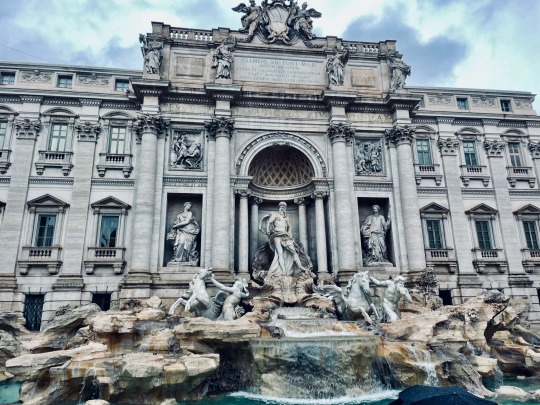

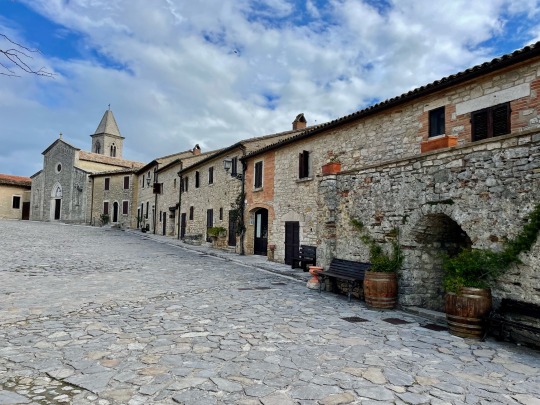

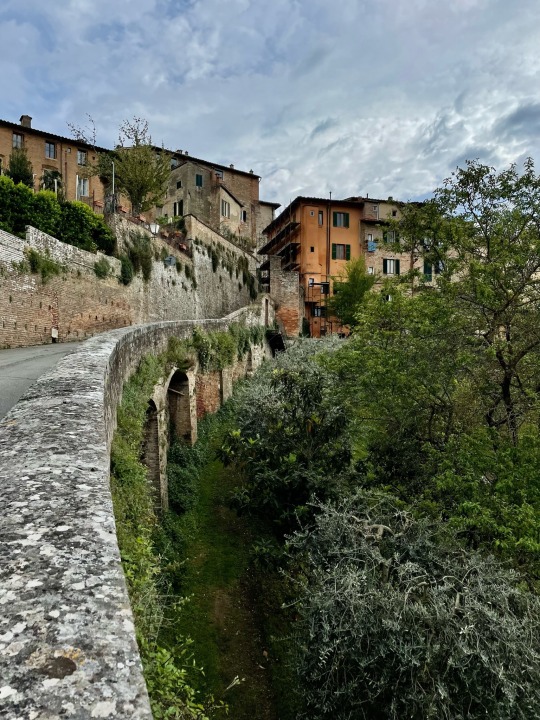

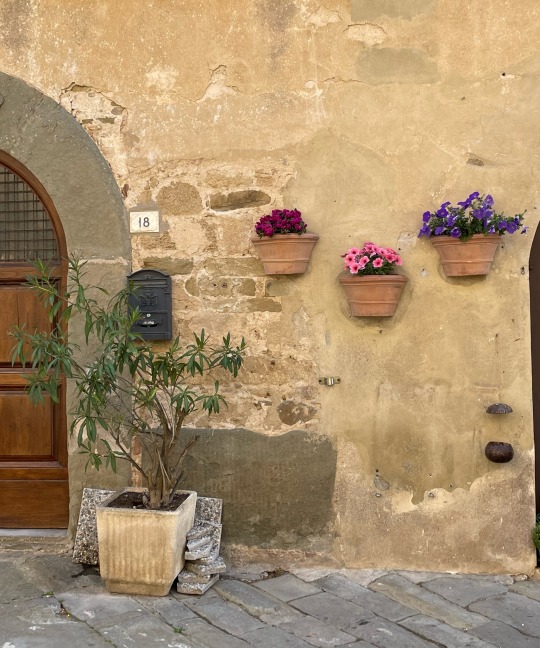
#naturalbeauty#nofilter#nature#clouds#ohwhatabeautifulday#spring#northern italy#trip to italy#April 2023#Rome#civita di bagnoregio#titignano#perugia#Siena#lucca#Pisa#populonia
2 notes
·
View notes
Text












Populonia (08/08/2023)
1, 2, 3, 4, 5, 6: necropoli di San Cerbone
7, 8, 9, 10: acropoli
11, 12: vista dalla torre dell'Assunta
1 note
·
View note
Video
youtube
Populonia Exploring Tuscany's Most Beautiful Villages
Join me for a visit to Populonia, Tuscany’s ancient Etruscan town and one of Italy’s most beautiful villages.
0 notes
Text
i love the conspiracy theory that western historians don't want people to know about the etruscan civilization for whatever reason because girl they literally took us to populonia at least three times between elementary and middle school what the hell are you even talking about
176 notes
·
View notes
Photo

A tiny Etruscan Carnelian scarab (500-475 BC), depictions of the Trojan Horse with Greek warriors, Populonia.
MET Museum
63 notes
·
View notes
Text
Roman gods are not Greek gods: Juno
JUNO
Juno, just like the Greek goddess she was equated with (Hera), was the sister-wife of Jupiter, queen of the sky and queen of the gods. A great and ancient Italic goddess, Juno’s older titles were “Lucetia” and “Lucina”, referring to her role as the female embodiment of light – in fact, she seems to have been an embodiment of the moon – up until Julius Caesar’s reformation of the Roman calendar, Juno shared the first day of each month alongside Janus, since they were supposed to be new moon days.
But this original “light” attribute got quickly fused with another main feature of the goddess: her role as a goddess of motherhood. Indeed, as “Juno Lucina” she was the goddess of childbirth and protectress of pregnancies, literally she who brought the baby into the light (Lucina meaning “bringer of light” – it might originally have been a title of Juno referring to her primitive nature as a moon goddess). Childbirth was one of the two main “jobs” of Juno, alongside weddings and marriages (the latter just like Hera), because these two events were considered to be the most important ones in the life of a Roman woman – and Juno was actually the protectress of women, the embodiment of womanhood, the deity who followed women all throughout their life. This manifested through her many variations: as Juno Matronalia, she was the goddess of matrons. When a child was born, Juno Rumina was prayed to make sure mothers could make good nurses (aka could lactate enough), while Juno Ossipagina was called to make the bones of the babe strong. Juno was present from the beginnings to the end of the wedding ceremony, from Juno Pronoba (who make sure engagements went well) to Juno Juga (who made the couple fertile), passing by Juno Domiduca (who watched over nuptial processions) or Juno Cinxia (the one who removed the bride’s girdle during the wedding night). All in all, Juno was the fecund power of women, Juno Martialis – the mother of Mars, god of vegetation and springtime, and as such she was the very spirit of birth and fertility.
(If you are confused by all these names, be prepared, because Juno is one of the Roman goddesses with the most names/nicknames/epithets/functions of the Roman pantheon)
Now, as you know by now, the Roman gods always have a more political aspect, and Juno is no different. As a “mother-goddess”, Juno was extended from a simple deity watching over children, to the figurative protectress of the very Roman people, the queen-mother of the Roman nation. There was a very clear evolution of her women-related functions into state-related ones. Juno Sospita was originally the aspect of the goddess in charge of bringing the delivery at the end of the pregnancy, the one who caused the birth – but figuratively, became a deity of freedom, the liberator of the oppressed. Similarly, Juno Moneta was originally the aspect of Juno that gave good advice to the husbands before the wedding – but quickly, Juno Moneta became the adviser and counselor of the very Roman people. In fact, a legend claims that when an army from Gaul tried to invade Rome one night, it was the geese, the goddess’ sacred birds, that warned the sleeping citizens of the upcoming invader with their loud cries – and thus, Juno Moneta was considered to be the goddess who warned the Romans of any upcoming threat. Other “political” aspects of the goddess, that still include her role as a fecundity goddess, include Juno Populonia – the goddess in charge of “multiplying” the Romans and “populating” Rome through sexual fertility and pregnancies.
It is important to remember that Juno, alongside Jupiter and Minerva, was part of the Capitoline Triad – the trio of gods that protected the Roman State, and ensured its continuity and durability. In this triad, she was called Juno Regina, protectress of the State, and she held attributes identical to those of Jupiter (the lightning, the scepter…), clearly identifying her as the female counterpart of Jupiter, and thus, just like him, a patron-goddess of the Romans as a whole. She even had a military aspect as Juno Curitis (or Quirits), worshiped by the Roman soldiers! (Which made her one of the rare goddesses with a permanent military cult).
An interesting fact: Juno was often depicted in Roman art holding weapons and wearing a goat-skin. It isn’t just a reflection of her military aspect – it is also an imagery that the Romans borrowed from the Greek Athena, but implanted on Juno instead of Minerva (since, as I said before, they kind of de-militarized Athena with their Minerva).
A last interesting note: the same way the Romans romanticized Venus and Mars’ relationship by ditching the original extra-conjugal nature of the Aphrodite/Mars affair, to the point of sometimes depicting them as a married couple ; the Romans also… let’s say “softened” up the bulk of legends surrounding Juno. Mostly the extra-marital business. Roman mythology never took an interest for the various stories of Hera’s revenges, wraths and punishments – and the Romans probably didn’t understood how a goddess of wedding would be depicted living badly her own marriage (again, they were very practical people, not fond of illegitimate loves). Ovid did bring some sorties of Zeus’ affairs with mortals into Roman literature, because again he was all about sexual business with transformations involved, but as I said it never stuck much, and so the Jupiter-Juno couple was depicted as much more peaceful and solid one than the Zeus-Hera one, and Juno was a less frightening and vindictive goddess than her Greek counterpart.
47 notes
·
View notes
Text
@icccarus tagged me to list five (5) songs i've been listening to lately:
"populonia" by mattiel
"make that move" by shalamar
"something about you" by eyedress and dent may
"shine on" by bedouin soundclash
"1979" by the smashing pumpkins
I call on @trekwiz and @alexinbox and @plystation and @bussywitchboy 🗿
6 notes
·
View notes
Photo

Italské Vánoce
Italské Vánoce, to je především “panettone” … taková buchta z vánočkového těsta, nebo její věrná družka “pandoro”, která se podobá bábovce…
Někdo si Vánoce spojuje s kaprem, já s touhle buchtou!!!!! Mám na ni výhradně citovou závislost- chuťově není nic moc! V Itálii je všude! V nádherných barevných krabičkách! A už jen pro tu krabici ji každý rok kupujeme.

Letošní Štědrý den byl pro nás skutečným zážitkem. V Tellaru, historickém kamenném městečku nad mořem s malou zátokou, se zhasla všechna elektrická osvětlení a zaplálo tisíce svíček…světýlka byla rozeseta i po skaliskách kolem moře, takže jste z toho měli dojem pohádkového světa… svíčky voněly voskem a vydávaly teplo… Následovalo vylovení Ježíška z podmořské hladiny a bouřlivý ohňostroj, jaký lze snad zažít jen nad mořem…

Štědrovečerní večeře v podobě zapečeného lilku s gorgonzolou a ořechy a český bramborový salát… cukroví od Dimitrise z řecké kavárny a místní citrusy… improvizovaný stromeček a pohled na moře… to jsou naše Vánoce. Před večeři jsme poseděli v kavárně na břehu moře, popíjeli kafe a prošli si trh, na kterém byla spousta zajímavých věciček vhodných jako dárek pod stromeček. Třeba mosazné talíře, dózičky a prastarý neapolský kávovar - konvička na oheň se sítkem a tryskou… a to vše se dalo zabalit do legračních propagačních letáků místních malých supermarketů, nabízejících potraviny…Tisíce světýlek zdobících palmy a všechny stromy kolem, domy, jež si pamatují dlouhatánskou historii, moře, které tyhle pocity odnáší a přináší novou energii…
Vánoční čas jsme strávili potulováním se po Lerici...



Portu Venere...

... a “Cinque terre” v Ligurii.




Rozeklané skály nad mořem na kterých se tyčí malá starobylá barevná městečka se spoustou schodů, s maličkými obchůdky a dokonce i cestami “zarytými” ve skalách, spojujícími jednotlivá městečka, po kterých si turista může vyrazit pěšky.

Všude dostanete bezkonkurenční kafe za euro s nádhernou čokoládovou vůní i chutí. Proberete s místními jejich pocity z každé maličkosti a když zjistíte, jako já, že se vám začnou zdát sny v Italštině, je vám jasné, že jste tu teď zakotvili tělem i duší… i když zrovna tak jasné mi je, že domov mám jinde, ale v tomhle si na chvíli spočinu a neberu co mi nabízí. Třeba slunce, teplotu kolem 15-17 stupňů, při troše otužilosti pár minut koupání ve vlnách, procházky, rozjímání, pozorování racků a mořské pěny, sbírání kamínků…

Co se týká jídla, je to tu pro nás těstovinový a pizzový ráj… “spaghetti n.5” z italského Coop odvážíme ve velkém… je obrovský rozdíl mezi italskými těstovinami vyráběnými pro cizí trh a pro jejich vlastní ( i když balení může být stejné- obsah je jiný!)

V Lerici jsme v pizzerii dostali i černou pizzu vyrobenou ze zvláštní směsi celozrnných mouk a živočišného černého uhlí… je to pochoutka!

Konec roku a Silvestrovský den jsme se rozhodli strávit v Toskánsku a tak jsme neodolali a při přesunu se zastavovali na všech místech, kde jsme strávili velký kus života. Nejprve Livorno a Terrazza Mascagni, cizrnová placka (torta di ceci).

Pokračovali jsme podél moře, známými městečky, kde jsme strávili spoustu krásných chvil. Bára toužila po “ponce livornese” což je nenapodobitelná místní krajová specialita ( kafe s kořalkou a citronovou kůrou)… tak jsme zabrzdili u baru, kde seděl jen jeden místní dědula a splnili si to její přání hned všichni! Některé věci jsou prostě nakažlivé!!!!!

Přesunuli jsme se do kraje Etrusků, na etruskou riviéru a ubytovali se v San Vincenzu, což je super výchozí bod ( jen tam nejezděte v létě!!!) - 13 km po písčité pláži dojdete až do magického zálivu Baratti...

Po cestě neminete bez povšimnutí domy architekta Vittoria Giorginiho ( ve tvaru dinosaura, nebo chaloupky na “kuřích nožkách”)

Casa Saldarini nebo také “dinosauro”, 1962
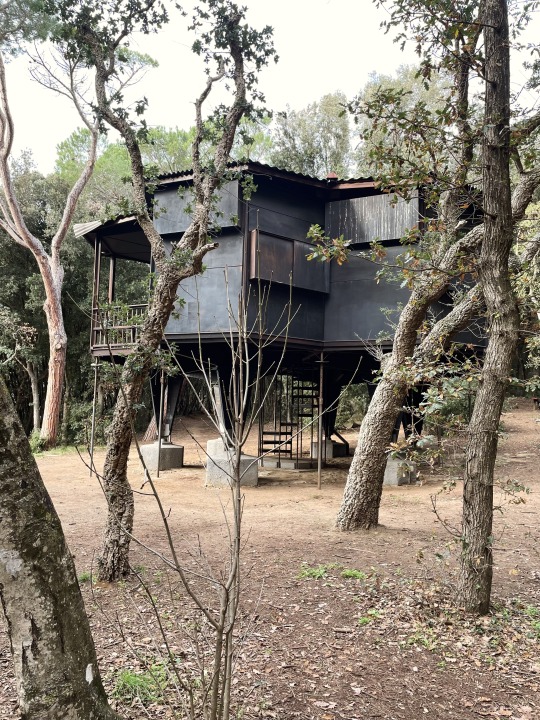
Casa Esagano, 1957
Nebo můžete autem vyjet do okolních kopců a malých městeček (Populonia, Bolgheri, Castagneto Carducci, Massa Marittima, Suveretto, Sassetta, Campiglia Marittima….) Uchvátila nás Campiglia Marittima - tu jsme totiž neznali! Na náměstí pod hradem svítil stromeček, zaražený do jedné díry v dláždění, taky tu byl jediný otevřený bar a díky zimnímu období se na náměstíčku pohybovali jen místní. Připravovali se na následující den, kdy měla vypuknout silvestrovská oslava. Stavěli maličké pódium a přiváželi dřevo na ohně.

Desítky starých brachů je vtom podporovalo, radili a okukovali. Stařičký pán, nesoucí si svoji kyslíkovou bombu na zádech jako břemeno, od které mu vedly hadičky až k nosu, se zastavoval a každému přál “auguri” do Nového roku! Paní o hůlce klábosila s druhou v zástěře ve dveřích pekárny a probíraly jaký chleba dnes koupí. V přízemí jednoho kamenného domu byla otevřená garáž. Nápis “PRESEPE” zval dovnitř k návštěvě Betléma. Ve vstupu byly izolepou připevněné fotky od roku 2000. Tehdy starý pán začal postupně vyrábět domečky, pohybující se postavičky, světýlka… každý rok něco přibude, hmmm, asi jeden z nejkrásnějších Betlémů jaký jsem viděla! Byla v něm zakleta obrovská píle a nadšení jednoho člověka, který si nezapomněl hrát!

Lidé mu do pokladničky házejí příspěvky a z těch se potom tvoří dál a dál! Ale pozor! Pokladnička nikterak nesouvisí se spuštěním samotného Betlému. Zmáčkneš tlačítko a představení začíná. Nejprve se spustí vánoční píseň v podání Lucciana Pavarottiho; zakokrhá kohout a domečky v městečku Campiglia Marittima v miniatuře, postupně ožívají. Prolétá kometa. Pradleny perou, teče voda, potůček zurčí, pekař dává chleba do pece, Jezulátko se kolébá. Zvoní zvony. Ani se nám nechce zpátky do reálného světa! Ovšem i ve skutečném městečku panuje díky tomu, že zde nebloumají davy turistů, klid. Potkáváme jen zájezd starých táborníků z Modeny. Jsou veselí a výřeční. Auguri! Auguri…..asi 30x… (přejeme si navzájem štěstí s každým z třiceti italských turistů zvlášť).
Silvestr se taky vydařil. Udělali jsme si pastu all pomodoro, vyzbrojili se sektem a vyrazili na pláž. V San Vincenzu jsme bydleli ve staré vile hned u moře a tak jsme mohli z mola pozorovat desítky novoročních ohňostrojů z okolí… s námi pozorovala skupinka puperťáků. Všichni nám popřáli, představili se a zeptali se odkud jsme! Potom Fabio pustil jakýsi vypalovák z osmdesátek a čekalo se na půlnoc… společně s nimi jsme odpočítali 10,9,8,7,6,5,4,3,2,1…. a vítali s nadšením to, co právě přichází… co to bude, uvidíme! A tak vám všem přejeme, aby to, co přichází stálo za to žít!!

Krásný rok 2023 !!!
3 notes
·
View notes
Text

14.286) Itália- Populonia Piombino (não circulado) https://www.bialto.com/listing/14286-italia-populonia-piombino-nao-circulado/18399451
0 notes
Text
La Spezia: Festival dell’archeologia sperimentale divulgativa sul Mondo Antico

La Spezia: Festival dell’archeologia sperimentale divulgativa sul Mondo Antico.
Al via la XVII edizione del Paleofestival, il Festival dell’Archeologia Sperimentale Divulgativa sul Mondo Antico, che si terrà al Castello San Giorgio della Spezia nelle giornate del 27 e del 28 aprile e presentata oggi in conferenza stampa dal Sindaco Pierluigi Peracchini, dalla dirigente ai Servizi Culturali Rosanna Ghirri e dalla curatrice del progetto Donatella Alessi.
“Nei suoi diciassette anni di vita, il Paleofestival è diventato un appuntamento irrinunciabile nel calendario culturale spezzino, e non solo, grazie al costante rinnovamento delle attività proposte che hanno coinvolto un pubblico sempre più vasto ed eterogeneo, riscuotendo un grande successo e gradimento da parte dei partecipanti - dichiara il Sindaco della Spezia Pierluigi Peracchini – questa edizione vedrà anche diverse novità che sicuramente sapranno coinvolgere e interessare.”
In queste due giornate il giardino, le terrazze e tutti gli spazi del Castello si trasformeranno in un grande parco archeologico urbano dove saranno creati dei punti interattivi condotti da archeologi sperimentalisti, archeotecnici, personale didattico dei musei e di parchi archeologici e sperimentatori per divulgare, con dimostrazioni interattive e laboratori, gli usi e i costumi della Preistoria e delle antiche civiltà.
Attraverso attività esperienziali, momenti ludici, laboratori manuali e spettacoli da vivere in prima persona, il Paleofestival divulga le sperimentazioni archeologiche insegnando a bambini ed adulti a manipolare la materia per produrre gli strumenti e utensili della Preistoria così che, conoscendo le radici del nostro passato, possano migliorare il loro futuro in una nuova consapevolezza del rapporto con l’ambiente e con la società.
Nell’antichità, infatti, il riuso e il riciclo dei materiali era fondamentale per il risparmio economico, e la trasmissione pratica dei saperi era il metodo principale di insegnamento, poiché si garantivano insieme la sopravvivenza e il progresso di tutta la comunità.
Il programma di quest’anno è particolarmente ricco di proposte, ben 35 diverse attività, e saranno presenti, oltre ai fidati protagonisti delle scorse edizioni, nuovi sperimentatori e nuove collaborazioni con parchi archeologici provenienti da tutta Italia e anche dalla Corsica.
Al termine della giornata del 27 aprile sarà presentato uno spettacolo fondato sul racconto e la musica che narrerà le tappe fondamentali del lungo cammino umano, con il sottofondo delle musiche di Antonio Vivaldi, che ci porterà alla conoscenza delle scoperte che hanno cambiato la nostra storia.
La novità più significativa di quest’anno è la riproposta del convegno scientifico dal respiro internazionale del Paleofestival “Quinto incontro studi di archeologia sperimentale. Problematiche e soluzioni tra ricerca e divulgazione” che si svolgerà domenica 28 aprile dalle ore 11.00 alle ore 13.00 ad ingresso gratuito e senza prenotazione.
I lavori del convegno, dopo i saluti istituzionali del Sindaco Peracchini, saranno introdotti da Donatella Alessi, conservatrice del Museo del Castello San Giorgio e moderati dall’archeologo Edoardo Ratti.
Le tematiche trattate saranno il racconto di sperimentazioni archeologiche nuove e ricerche specialistiche e la presentazione di parchi archeologici, dei loro scavi archeologici e delle loro attività educative.
Nel corso del convegno interverranno: Marta Coccoluto, responsabile del Parco Archeologico di Baratti e Populonia “Populonia, città sul mare. Ricerca archeologica, progetti di valorizzazione e management culturale”; Vincent Lascour dell’Associazione Chalcophore, “La strada dell’ossidiana. La circumnavigazione della Corsica in piroga monossile”; Stefano Ricci, antropologo dell’Università di Siena, “Noi, i Neandertaliani e i Denisoviani: storie di convivenza preistoriche”; Fabio Fazzini, archeologo, “Ambra, storia e lavorazione nel Piceno dell’Età del Ferro”.
Come prenotare.
Anche quest’anno saranno inseriti laboratori per adulti che potranno finalmente divertirsi da soli o con i loro bambini. E’ consigliato per tutti i partecipanti scegliere e prenotarsi per le attività programmate per la giornata.
Il biglietto di ingresso ha il costo di 5 euro un giorno; 8 euro due giorni.
Biglietto famiglia genitori e figli 15 euro un giorno e 20 euro due giorni; ulteriore accompagnatore 2.50 euro al giorno.
L'evento si svolgerà anche in caso di maltempo.
La prevendita è attiva presso il Museo del Castello.
Info: tel. 0187/751142 e 0187/727219
e-mail: [email protected]
Museo del Castello di San Giorgio, via XXVII Marzo, La Spezia
Siti internet: museodelcastello.spezianet.it ;
Seguiteci anche su facebook: @MuseoCastelloSanGiorgio...
#notizie #news #breakingnews #cronaca #politica #eventi #sport #moda
Read the full article
0 notes
Text
Reperti archeologici etruschi: una finestra su una civiltà affascinante
Gli Etruschi, antica civiltà dell'Italia preromana, hanno lasciato un'eredità ricca di reperti archeologici che ci permettono di conoscere la loro cultura, la loro religione, le loro abitudini e il loro stile di vita. Questi reperti si possono ammirare in diversi musei e siti archeologici sparsi per l'Italia, principalmente in Toscana, Lazio e Umbria.
Tipologie di reperti archeologici etruschi trovati
- Sculture: Statue in terracotta, pietra o bronzo raffiguranti divinità, personaggi mitologici, antenati o figure di defunti. Tra le più celebri ricordiamo il Sarcofago degli Sposi di Cerveteri, il Guerriero di Capestrano e la Chimera di Arezzo.
- Ceramiche: Vasi di diverse forme e dimensioni, decorati con motivi geometrici, scene di vita quotidiana o figure mitologiche. La produzione ceramica etrusca era molto raffinata e varia, con buccheri, vasi a impasto, kylikes, olle e anfore.
- Arredi funerari: Oggetti che accompagnavano il defunto nell'aldilà, come vasellame, gioielli, armi, utensili e statuette votive. Le tombe etrusche, spesso decorate con affreschi, ci forniscono informazioni preziose sulla loro concezione della morte e dell'aldilà.
- Oggetti di uso quotidiano: Strumenti in bronzo e ferro per l'agricoltura, l'artigianato e la vita domestica, come fibule, pettini, specchi, vasellame e utensili da cucina.
- Iscrizioni: Testi in lingua etrusca, ancora in parte indecifrata, che ci aiutano a comprendere la loro storia, la loro religione e la loro organizzazione sociale. Le iscrizioni si trovano su stele, lapidi, vasi e altri oggetti.
Siti archeologici famosi
- Necropoli di Cerveteri e Tarquinia: Patrimonio Mondiale dell'UNESCO, con migliaia di tombe decorate con affreschi che illustrano la vita quotidiana e le credenze religiose degli Etruschi.
- Volterra: Antica città etrusca con mura di cinta, porte urbiche, templi e un importante museo archeologico.
- Orvieto: Città etrusca rupestre con un suggestivo dedalo di vie sotterranee, pozzi e cisterne.
- Veio: Importante città etrusca con un santuario federale e resti di templi e abitazioni.
- Populonia: Città etrusca portuale con necropoli, acropoli e resti di fonderie.
Musei dove ammirare i reperti trovati
- Museo Nazionale Etrusco di Villa Giulia (Roma): Uno dei più importanti musei al mondo dedicati alla civiltà etrusca, con una vasta collezione di reperti archeologici.
- Museo Archeologico Nazionale di Firenze: Ospita una ricca collezione di reperti etruschi provenienti da diverse zone della Toscana.
- Museo Archeologico Nazionale di Tarquinia: Conserva reperti provenienti dalla necropoli etrusca della città, tra cui vasi dipinti, sarcofagi e gioielli.
- Museo Archeologico Isidoro Falchi di Vetulonia: Raccolta di reperti etruschi provenienti dalla necropoli di Vetulonia, tra cui buccheri, bronzi e ceramiche decorate.
Il mistero affascinante degli Etruschi
Lo studio dei reperti archeologici etruschi ci permette di ricostruire la storia di questa antica civiltà e di apprezzare la sua ricchezza culturale e artistica. La loro eredità continua ad affascinare studiosi e appassionati di tutto il mondo.
Foto di Angelika da Pixabay
Read the full article
0 notes
Text
Due ragazze a zonzo su una macchina rossa (4): due delle 45 mila necropoli etrusche in Italia
Per necropoli etrusche
Sul perché siamo andate a caccia di necropoli etrusche ho già dato. Sul perché si debbano vedere se non tutte che non so quante sono ma almeno le tre principali di Cerveteri Tarquinia e Populonia (spoiler: ce ne manca una) ho una mia opinione: noi deriviamo, in forme artistiche e convincimenti, tanto dagli etrusci quanto dai romani (che infatti hanno avuto una sorta di assimilazione reciproca).…

View On WordPress
0 notes
Text
Sit
#toscana #tuscany #sea #mare #panchina #bucadellefate #baratti #populonia #bench
instagram
0 notes
Text
People
People =
Synonyms {community, crowd, family, folk, nation, population, public, society, bodies, bourgeois, citizens, clan, commonality, folks, heads, herd, horde, humanity, humankind, humans, inhabitants, kin, masses, mob, mortals, multitude, nationality, persons, plebeians, populace, proletariat, race, tribe, John/Jane, Q., Public, body, politic, common, people, general, public, hoi, polloi, human, race, person, in, the, street, rabble, rank, and, file, riffraff}
Definition : https://www.merriam-webster.com/dictionary/people
Etymology : (n.) c. 1300, peple, "humans, persons in general, men and women," from Anglo-French peple, people, Old French pople, peupel "people, population, crowd; mankind, humanity," from Latin populus "a people, nation; body of citizens; a multitude, crowd, throng," a word of unknown origin. Based on Italic cognates and derivatives such as populari "to lay waste, ravage, plunder, pillage," Populonia, a surname of Juno, literally "she who protects against devastation," the Proto-Italic root is said to mean "army" [de Vaan]. An Etruscan origin also has been proposed. The Latin word also is the source of Spanish pueblo, Italian popolo. In English, it displaced native folk.
Sense of "Some unspecified persons" is from c. 1300. Meaning "body of persons comprising a community" is by mid-14c. (late 13c. in Anglo-French); the meaning "common people, masses" (as distinguished from the nobility) is from late 13c. The meaning "members of one's family, tribe, or clan" is from late 14c.
The word was adopted after c. 1920 by Communist totalitarian states, according to their opponents to give a spurious sense of populism to their governments. It is based on the political sense of the word, "the whole body of enfranchised citizens (considered as the sovereign source of government power," attested from 1640s. This also is the sense in the legal phrase The People vs., in U.S. cases of prosecution under certain laws (1801).
The people are the only censors of their governors: and even their errors will tend to keep these to the true principles of their institution. To punish these errors too severely would be to suppress the only safeguard of the public liberty. The way to prevent these irregular interpositions of the people is to give them full information of their affairs thro’ the channel of the public papers, and to contrive that those papers should penetrate the whole mass of the people. [Jefferson to Edward Carrington, Jan. 16, 1787]
People of the Book "those whose religion entails adherence to a book of divine revelation" (1834) translates Arabic Ahl al-Kitab.
(v.) mid-15c., peplen, "to provide (a land) with inhabitants" (transitive), also "inhabit, populate, fill or occupy as inhabitants" (intransitive, implied in peopled), from people (n.), or else from Old French popler, peupler, from Old French peuple. Related: Peopling.
0 notes

